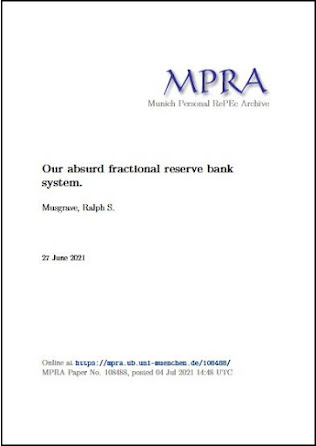The quick answer is: precious few. But I set out a fuller answer in the article / paper above, which is about 3,000 words. The following is a summary of that article (about 500 words).
Fractional reserve (FR) is defined in economics dictionaries as a system where banks keep a stock of cash or “reserves” which is a small fraction of the amount of cash which they are obliged to hand out to depositors, should every depositor withdraw their money from the bank all at once. Put another way, FR involves “borrow short and lend long”. Obviously that’s a risky strategy, and that risk is the basic explanation for the hundreds of bank failures throughout history and for the 2008 bank crisis, which caused tens of millions to lose their jobs worldwide. (Of course it doesn’t require “every” depositor to withdraw in order to collapse a bank: a fairly small proportion will do, as was demonstrated at Northern Rock and hundreds of other FR banks which have failed throughout history.)
So FR must have some amazing advantages to make up for the latter glaring deficiency, or so you might think. In fact, the “advantages” are a joke.
One alleged advantage is that FR enables commercial banks to create money. But governments and their central banks can create whatever amount of money is needed to bring full employment anytime! Moreover, the amount of money created by private / commercial banks over the last ten years has been WHOLLY INADEQUATE for dealing with the aftermath of the 2008 crisis and Covid: i.e. governments have had to step in and do most of the money creation. So that excuse for FR falls flat on its face.
Interest rates.
A second excuse is that FR involves lower interest rates than full reserve. There’s actually a reason for thinking that is not the case, but even if it is the case, the lower interest rates are only possible as a result of government support for FR banks in the form of deposit insurance and bank bail outs, and those two amount to a subsidy of the bank system (sometimes called the “too big to fail” subsidy).
Thus far from the lower interest rates that may obtain under FR maximising GDP, it is actually the higher interest rate scenario (full reserve) which maximises GDP because the higher interest rate scenario is more of a free market, i.e. it’s a subsidy free set up. Certainly interest rates in the 1990s were much higher than nowadays (mortgagors in the UK paid almost three times the rate they do nowadays), yet growth was perfectly respectable in the 1990s.
Flexibility.
A third alleged advantage of FR is that it supposedly gives banks more flexibility in that when a bank spots more than the usual number of viable borrowers, it can simply create money out of thin air and lend it. Unfortunately the reality is that banks for the most part use that flexibility to expand their lending during a boom, and then contract their lending or even call in loans come a recession. I.e. the latter much vaunted flexibility actually results in banks exacerbating the boom / bust cycle.

No comments:
Post a Comment
Post a comment.